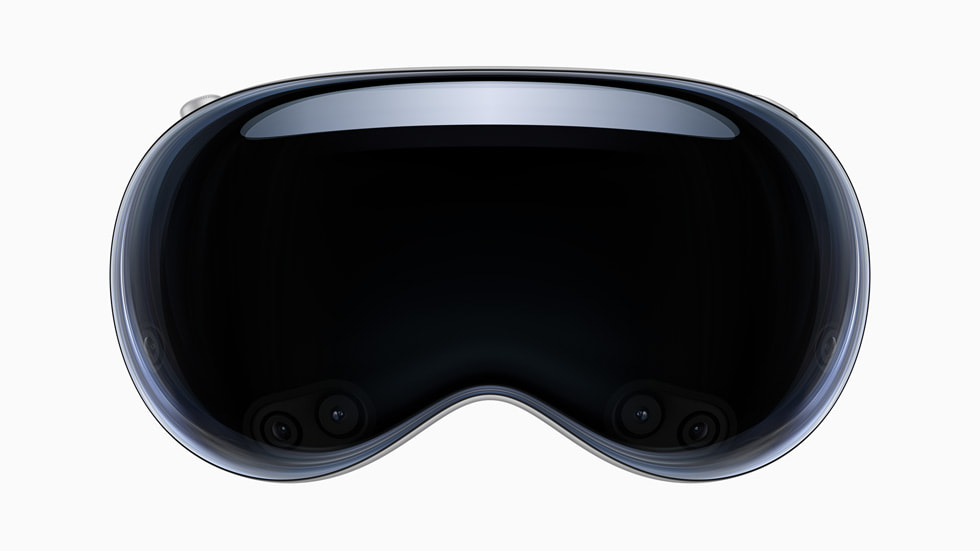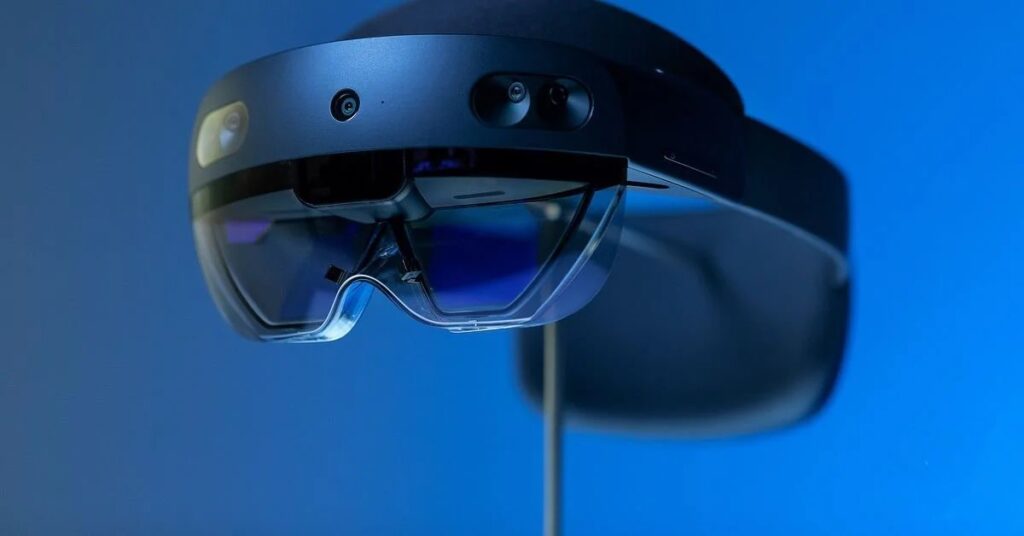Are you curious about the latest advancements in augmented reality (AR) technology?
With the release of the Apple Vision Pro and the ongoing popularity of Microsoft’s HoloLens 2, there’s a growing buzz about which headset offers the superior AR experience.
In this article, we will compare these two cutting-edge devices to help you make an informed decision.
Apple Vision Pro Vs Hololens 2
Design
Apple Vision Pro

Apple’s foray into AR headsets introduces the Vision Pro, a device that exudes elegance and modernity.
Resembling futuristic ski goggles, the Vision Pro is crafted with a lightweight aluminum frame and a gracefully curved glass display that wraps around the user’s field of vision.
This design is not only about looks; it’s also about user comfort, ensuring that wearers can enjoy prolonged sessions without feeling weighed down.
Microsoft HoloLens 2

In contrast, the HoloLens 2 opts for a more utilitarian design that speaks to its industrial applications.
The sturdy plastic construction is meant to withstand the rigors of professional environments.
Its visor-style form factor can be flipped up for ease of transition between AR tasks and real-world interactions, a feature that’s particularly useful for workers in fields like engineering, medicine, or manufacturing.
Features
Apple Vision Pro
The Vision Pro is poised to deliver an immersive AR experience to the consumer market.
It boasts a wider field of view compared to its Microsoft counterpart, which is crucial for creating a convincing blend of digital and physical worlds.
Furthermore, the Vision Pro is said to offer a surround sound experience that rivals high-end audio systems, making the audiovisual immersion truly captivating.
Microsoft HoloLens 2
Microsoft’s HoloLens 2, on the other hand, is a powerhouse of functionality designed for enterprise solutions.
It features precise hand tracking that allows for natural and intuitive interactions with holograms, making it an invaluable tool for collaborative design, complex training simulations, and remote guidance scenarios.
Comfort is also a key consideration, with the HoloLens 2 designed to be worn for extended periods without causing fatigue, which is essential for professionals who use the device as part of their daily workflow.
Price
Apple Vision Pro
With a price tag of $3,499, the Vision Pro is an investment in the high-end consumer AR experience.
Apple’s pricing reflects the premium nature of the product, and the company’s reputation for delivering top-tier technology with a focus on user experience.
The Vision Pro’s launch, slated for early 2024, suggests that Apple is positioning the device as a next-generation product that could potentially redefine the consumer AR market.
Microsoft HoloLens 2
The HoloLens 2 is positioned at a similar price point, with the developer edition available at $3,500.
However, the enterprise edition, which includes additional management tools and enterprise-level support, is priced higher at $4,500.
This pricing strategy reflects the headset’s utility in professional and industrial contexts, where the return on investment is measured in terms of productivity gains, enhanced training, and operational efficiencies.
comparison of the Apple Vision Pro and Microsoft HoloLens 2:
| Feature | Apple Vision Pro | Microsoft HoloLens 2 |
|---|---|---|
| Design | Ski goggle style, aluminum, curved glass | Industrial, plastic, visor-like |
| Audience | Consumer | Professional |
| Field of View | Wider for immersion | Standard for professional use |
| Comfort | High | High for extended use |
| Sound | Surround sound | Professional-grade |
| Hand Tracking | Assumed advanced | Advanced |
| Price (US) | $3,499 (launching early 2024) | Developer: $3,500, Enterprise: $4,500 |
